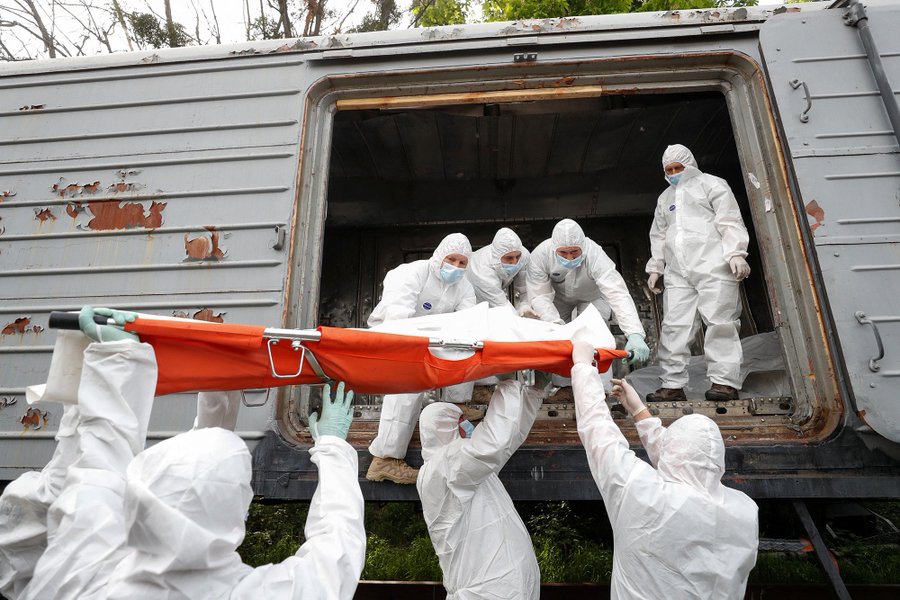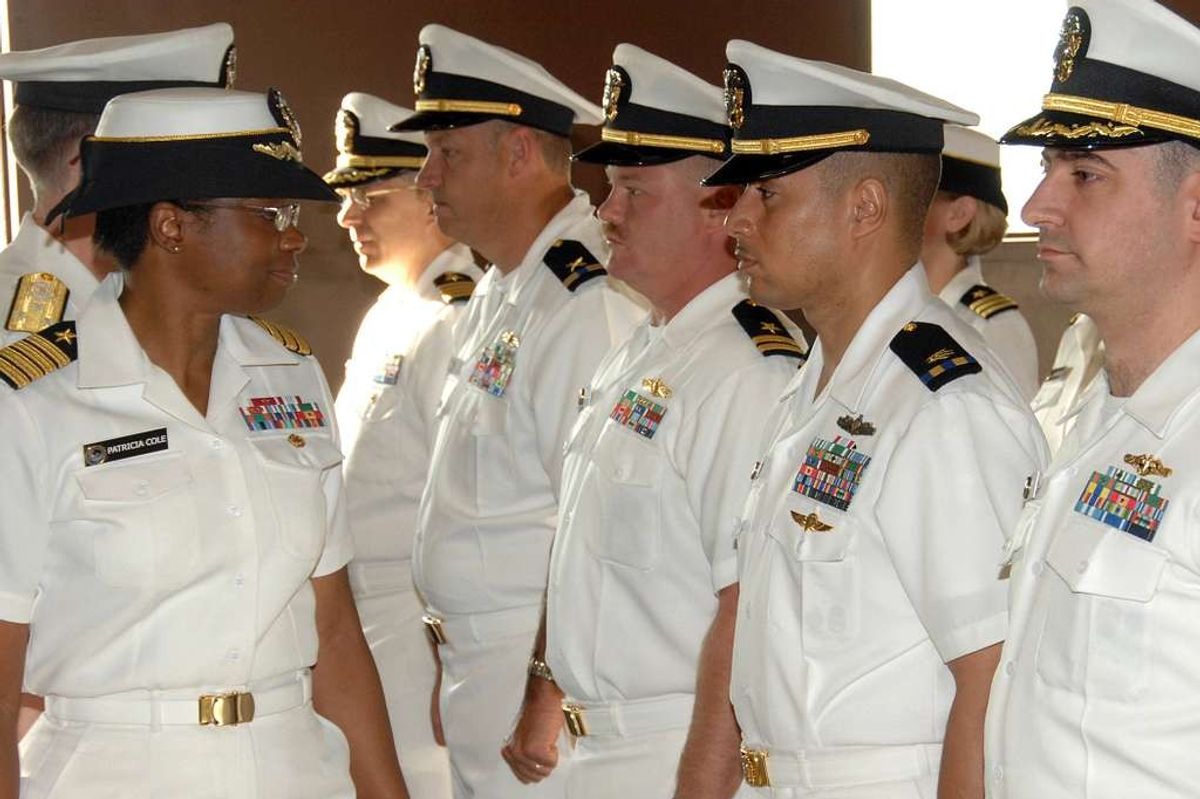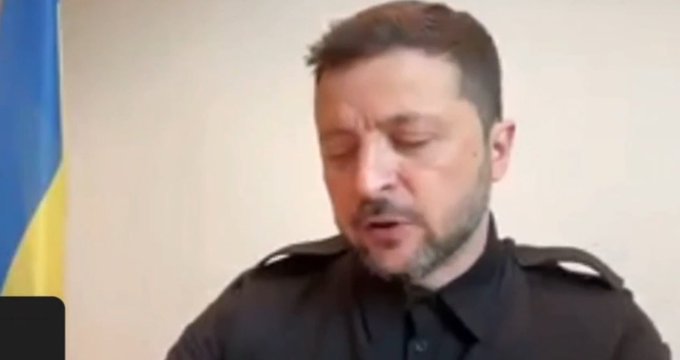Posted on 02/24/2024 5:59:01 AM PST by SpeedyInTexas
This list only includes destroyed vehicles and equipment of which photo or videographic evidence is available. Therefore, the amount of equipment destroyed is significantly higher than recorded here. Loitering munitions, drones used as unmanned bait, civilian vehicles and derelict equipment are not included in this list. All possible effort has gone into avoiding duplicate entries and discerning the status of equipment between captured or abandoned. Many of the entries listed as 'abandoned' will likely end up captured or destroyed. Similarly, some of the captured equipment might be destroyed if it can't be recovered. When a vehicle is captured and then lost in service with its new owners, it is only added as a loss of the original operator to avoid double listings. When the origin of a piece of equipment can't be established, it's not included in the list. The Soviet flag is used when the equipment in question was produced prior to 1991. This list is constantly updated as additional footage becomes available.
(Excerpt) Read more at oryxspioenkop.com ...
Thankfully, Tusk just got neutered.
He stated that SBU drones targeted four Russian military airfields simultaneously — "Belaya," "Dyagilevo," "Olenya," and "Ivanovo." Thanks to the operation’s design, it was possible to strike the largest number of enemy aircraft at once.
Overall, 34% of Russia’s strategic cruise missile carriers at key airbases were hit. The estimated value of the damaged strategic aviation is over $7 billion.
https://x.com/wartranslated/status/1929484183925309936
https://x.com/Maks_NAFO_FELLA/status/1929511578182816246
https://x.com/NOELreports/status/1929552027262091387

https://x.com/NOELreports/status/1929456504693834151
Reporting From Ukraine:
https://www.youtube.com/@RFU/videos
The complete transcript.
—
[ Tensions ExplodeE! Russians Call to Denazify The Baltics ]
Today [ June 1 ], we will discuss the increased Russian provocations and calls for the denazification of the Baltic countries. Not wanting to be caught off guard and taking these threats seriously, these countries are already taking measures to improve their security.
Most recently, Sergey Naryshkin, head of Russia’s Foreign Intelligence Service, warned that Poland and the Baltic countries would be the first to suffer in any conflict between NATO and Russia. He accused these nations of showing high aggressiveness and claimed they were underestimating the devastating consequences of provoking Moscow. This statement echoed a wave of similarly hostile rhetoric from Russian state officials and media figures, over the past two years.
Russian officials, including former President of Russia, Dmitry Medvedev, now deputy chairman of Russia’s Security Council, have repeatedly questioned the sovereignty of the Baltic countries. Medvedev declared that the Baltic states belong to Russia and accused NATO of harboring anti-Russian intentions. State television host Vladimir Solovyov has gone even further, stating that these countries don’t need independence, and that their sovereignty is a joke.
Such statements are not isolated; they reflect a coordinated campaign to frame the Baltics as illegitimate states and NATO’s eastern flank as a battleground ripe for denazification, a chilling repeat of the Russian justification for its war on Ukraine.
The term denazification is particularly troubling, as it has historically been used by Russia as a pretext for aggression. Prior to its 2022 invasion of Ukraine, Moscow framed its war aims in identical terms, alleging that Kyiv needed to be cleansed of Nazis, despite Ukraine being a functioning democracy with a Jewish President. Now, with similar language being used against Estonia, Latvia, and Lithuania, the fear is that these statements may not be mere propaganda, but early signs of a more expansive regional strategy.
From a military standpoint, the Baltic states represent a significant weakness for Russia, making them a tempting target. Kaliningrad, Russia’s exclave on the Baltic Sea, is completely isolated and surrounded by NATO territory, so prominent Russian media and political figures are constantly calling for the establishment of a direct land route to Kaliningrad. Most important is the narrow Suwalki Gap between Poland and Lithuania, as control over it would either sever or restore Russian land access to Kaliningrad, depending on who holds it.
At the same time, since Finland and Sweden joined NATO, the Baltic Sea has become almost entirely encircled by NATO members, severely limiting Russian maritime maneuverability. Russia’s Baltic Fleet, already small and aging, is no match for the combined naval power of NATO states in the region.
On land, the Baltic countries host forward-deployed NATO battle groups and conduct regular military exercises to prepare for rapid mobilization. These factors make any quick land grab by Russia, a tactic used in Crimea and eastern Ukraine, far less likely to succeed here. This only seems to enrage the Russian government further, fueling its hostile campaign.
Russia’s scare tactics extend beyond mere threats. The Kremlin actively invokes the presence of Russian-speaking populations in the Baltics, around 24% in Estonia and Latvia, as a rationale for intervention, much like it did in Ukraine. These demographics are a legacy of Soviet-era population transfers and remain a sensitive issue. Russian state media routinely portrays these ethnic Russians as oppressed and in need of protection, laying the narrative groundwork for a potential future military action.
The Baltics are not ignoring these signals. They have witnessed firsthand how Russia used similar rhetoric to justify its invasion of Ukraine. What was once dismissed as empty words has become a forerunner of real war. As such, Estonia, Latvia, and Lithuania are bolstering their defenses, strengthening their ties with NATO, and preparing for the possibility of battle. The line between information warfare ,and justification for full-scale war, is growing thinner, and with every new threat from Russia, the sense of urgency increases.
Overall, Russia’s repeated calls for the denazification of the Baltic states and its threats of direct retaliation are viewed with the utmost seriousness by their governments. The parallels with the lead-up to the war in Ukraine are stark, and after a series of provocations in the last months, the stakes are higher than ever. For Estonia, Latvia, and Lithuania, preparing for the worst is not paranoia, it’s a necessity and they are actively working to improve their security.
https://www.youtube.com/watch?v=lhkIzMcTiIM
Yes, it’s that very same conscript who filmed the video below.
https://x.com/Gerashchenko_en/status/1929553232046571974
The pressure for firing squads in Russia continues to build, and will distract them from adapting to the growing Military and economic pressures coming their way.
Popcorn is on hand, in preparation.
The Russians will hand over 6,000 frozen bodies of Ukrainian soldiers to Ukraine and will also continue to reunite children evacuated from war zones with their families, as they have been doing since the beginning of this conflict.
Despite everything that has happened, Russia still holds the moral high ground in this conflict.pic.twitter.com/deXQaoRfks— Gabe (@GabeZZOZZ) June 2, 2025

Recent relatively high Russian aviation losses appear to be prompting a significant decrease in Russian aviation activity in eastern Ukraine, although it is unclear how long this decrease in activity will last. Ukrainian Air Force Commander Lieutenant General Mykola Oleshchuk stated on March 2 that Russian aviation activity completely stopped in eastern Ukraine around 19:00 local time following the Ukrainian downing of two Russian Su-34 aircraft.
Ukrainian Air Force Spokesperson Colonel Yuriy Ihnat stated that the decrease in Russian aviation activity continued on March 3 and that Russian forces have continued not to fly A-50 long-range radar detection aircraft following the destruction of an A-50 aircraft on February 23.
Ukrainian officials reported that Russian forces have lost 15 aircraft since February 17, which is not negligible for the Russian military given that Russia likely has about 300 various Sukhoi fighter aircraft.
Previous Russian aircraft losses have prompted Russian forces to temporarily decrease aviation activity throughout Ukraine for significant periods of time, although it remains unclear how long this current period of temporarily decreased Russian aviation activity will last.
Russian forces appeared to tolerate an increased rate of aviation losses in recent weeks in order to conduct glide bomb strikes in support of ongoing Russian offensive operations in eastern Ukraine, and the Russian command may decide in the future to assume the risk of continued aviation losses in pursuit of further tactical gains.
Transfers of North Korean weapons to Russia by sea apparently paused as of mid-February 2024. North Korea-focused outlet NK Pro reported on February 29, citing satellite imagery, that Russian ships involved in the maritime transport of North Korean ammunition and weaponry to Russia have not docked at North Korea’s Rajin Port since February 12.
NK Pro reported that Russian ships have made at least 32 trips between the Rajin Port and Russia’s Dunay and Vostochny ports, Primorsky Krai since August 2023. NK Pro reported that the Russian Lady R cargo ship transported an unspecified number of shipping containers, likely containing North Korean ammunition and weapons, between North Korea and Russia from January 30 to February 8 and that the Maia-1 cargo ship arrived at Russia’s Vostochny Port from North Korea on February 12.
NK Pro reported that satellite imagery has not captured another large cargo ship traveling between the two piers or new deliveries to the Rajin Port since February 12 and suggested that the pause could be due to production issues in North Korea or other logistical issues.
NK Pro noted that North Korea could also be transporting weapons to Russia via air or rail. ISW previously reported that Russia uses the Baikal-Amur Railway and the East Siberian Railway to facilitate cargo transfers from and to China and North Korea, both countries that Russia is increasingly relying on for economic and military support respectively to sustain its war effort in Ukraine.
South Korean Defense Minister Shin Won-sik stated on February 26 that North Korea has sent an estimated 6,700 shipping containers of ammunition to Russia in recent months.
Shin stated that these containers could carry over three million 152mm artillery shells or roughly 500,000 122mm shells.
Smiles and complicity between Algerian boxer Imane Khelif and Macron.
pic.twitter.com/h2Q1h4CyZF— RadioGenoa (@RadioGenoa) June 2, 2025



Both candidates in the Polish election supported ongoing Military aid to Ukraine, and high Polish Defense spending to counter Russian aggression.
The election seems to have swung on domestic social issues.
Zelensky: “The Russian delegation behaved a little calmer, although still brazenly. Perhaps a few more events are needed, and they will try to behave like people.“
pic.twitter.com/xJj5aeuHh8— Lord Bebo (@MyLordBebo) June 2, 2025

June 6th is the next scheduled meeting of the Russian Central Bank.
They are under pressure to slash interest rates (unleashing the inflation genie), to buy the Russian economy a few months of reprieve, before the bill comes due in an inflationary spiral.
They will also be increasingly required to expand the money supply, to pay the current bills, as revenue drops and reserves are depleted - also driving higher inflation.
Circumstances are changing, that will require big policy shifts, and the pressures for a variety of acute crises developing are rising.
It is important that we ensure that adequate popcorn stocks are pre-positioned, as things tend to move more quickly if/when the brakes are removed.
Hopefully, more detailed BDA will be coming out for Operation Spiderweb today and tomorrow.
I have heard that among the planes hit, were two Ilyushin aerial refuelers, used to extend the range/duration of the bombers - another wrench in their prepared plans.
Disclaimer: Opinions posted on Free Republic are those of the individual posters and do not necessarily represent the opinion of Free Republic or its management. All materials posted herein are protected by copyright law and the exemption for fair use of copyrighted works.